Cape Adare Camp Completed
The Trust’s objective this season was to position and secure the required conservation equipment on site at Cape Adare to allow the conservation of Borchgrevink’s 1898 British Antarctic Expedition huts to be undertaken. These historic huts are the first built in Antarctica and are, in fact, the last remaining example of human’s first dwelling on any continent.
Combining Antarctic experience of over 75 seasons, this year’s team included Al Fastier (Trust’s Programme Manager), Nigel Watson (Executive Director), Johno Leitch and Doug Henderson.
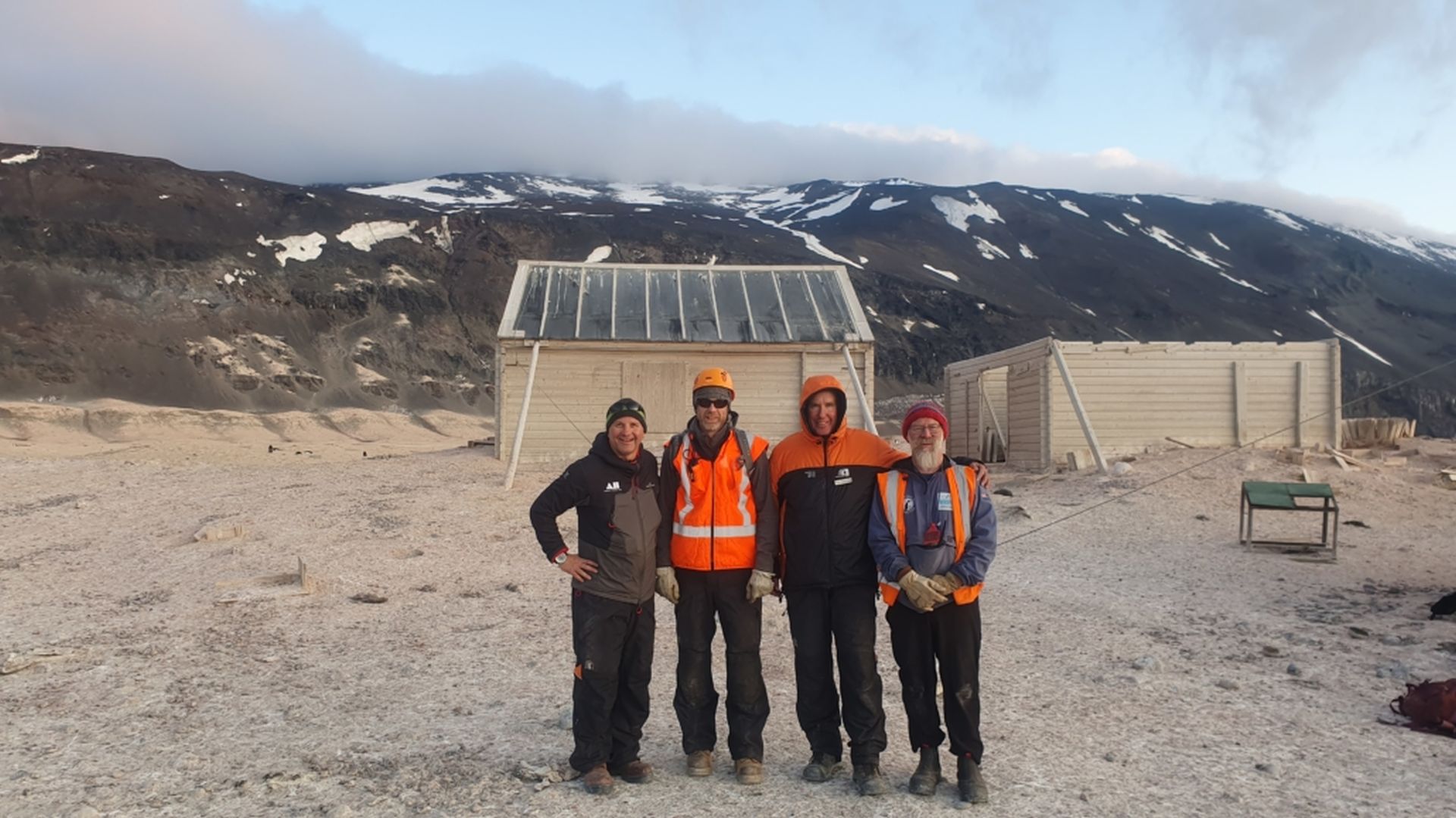 Antarctic Heritage Trust
Antarctic Heritage Trust The Trust’s Cape Adare team: Nigel, Jono, Doug and Al.
This work was undertaken with the support of the Polar Research Institute of China and transport aboard the icebreaker, the Xue Long. This support was timebound given the icebreaker’s other duties, which meant there was a sense of urgency around completing the task and a realisation that even with good planning, the success or failure of the operation depended on the weather.
Cape Adare is a difficult site to access being some 750km north of New Zealand’s Scott Base. To reach the site the team flew from Christchurch, New Zealand to Scott Base, Antarctica. From there, the team transitioned through the Italian Base before boarding the Xue Long to travel up the coast to Cape Adare. Thankfully, the sailing was reasonably calm.
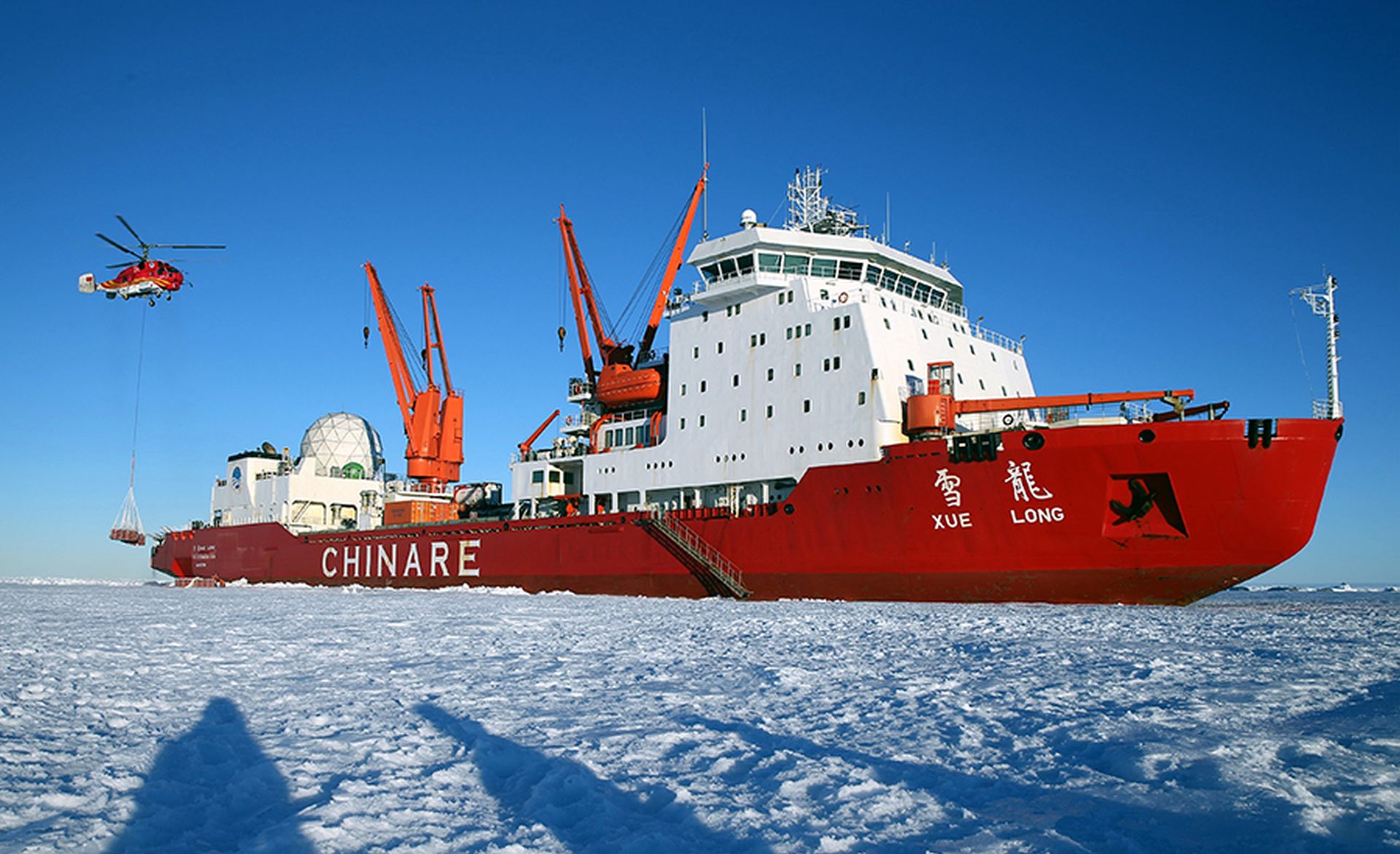 Antarctic Heritage Trust
Antarctic Heritage Trust The Xue Long
Cape Adare is renowned for its gale force winds and extreme weather so it was to the team’s amazement and relief when they arrived to a perfect day. The sun was shining and there was hardly a ripple on the sea. With the support and hard work of the Chinese crew the team successfully offloaded 16.5 tonnes of cargo from the icebreaker by helicopter and secured it onsite. This included sufficient food and water to support the conservation project for two summer seasons.
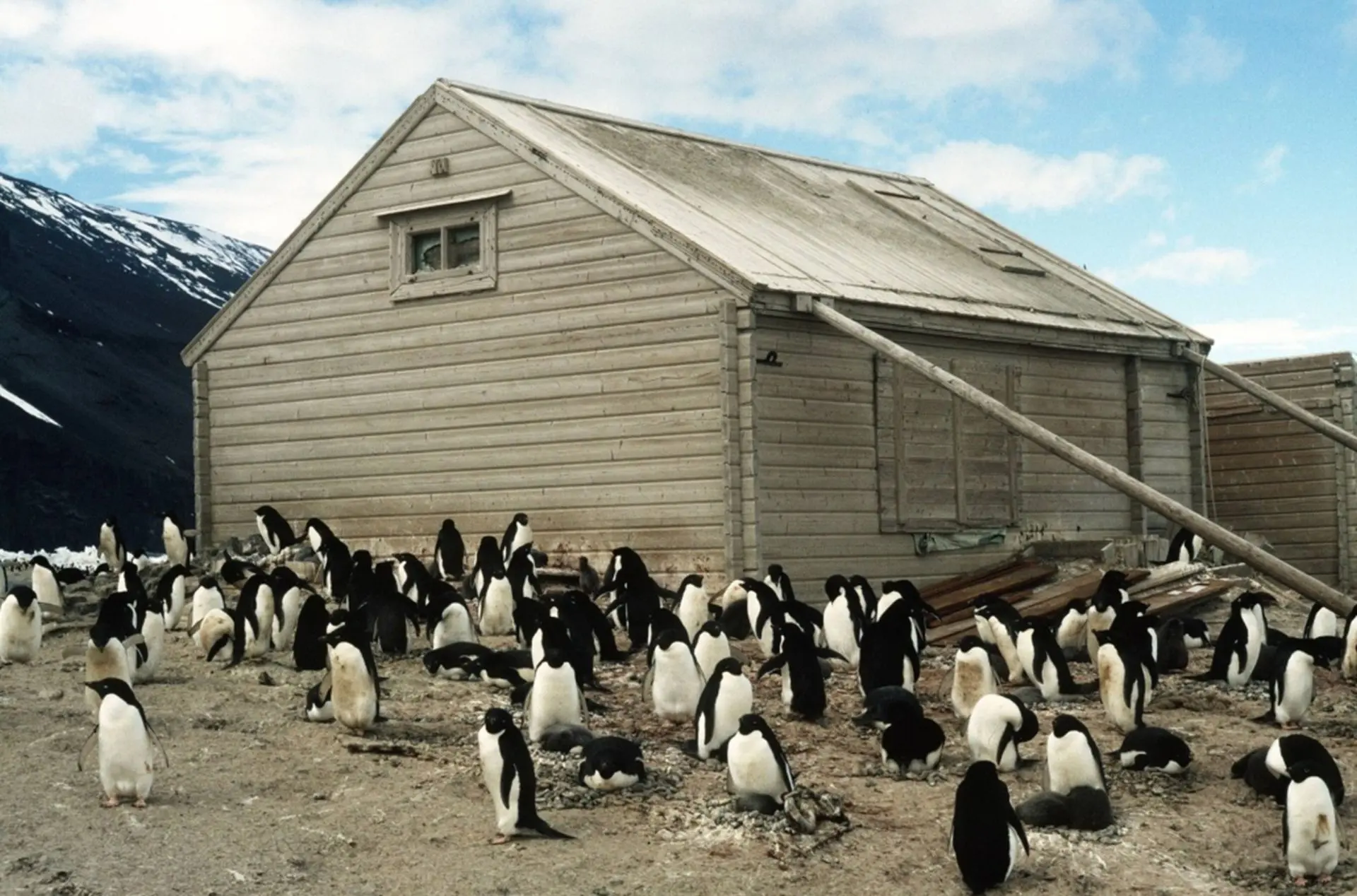 Antarctic Heritage Trust
Antarctic Heritage Trust Conservation continues on these first huts.
This completes the camp, which was started three seasons ago in 2017 with the installation of the ‘turks’ – three large water tanks that have been converted into a living area, work space and store room.
Al Fastier says, “It’s taken longer than we anticipated to finish the camp installation due to the logistical difficulties of accessing this site. In achieving this year’s work programme the conservation phase of the project has been set up for success, which will allow the iconic site to be conserved for future generations.
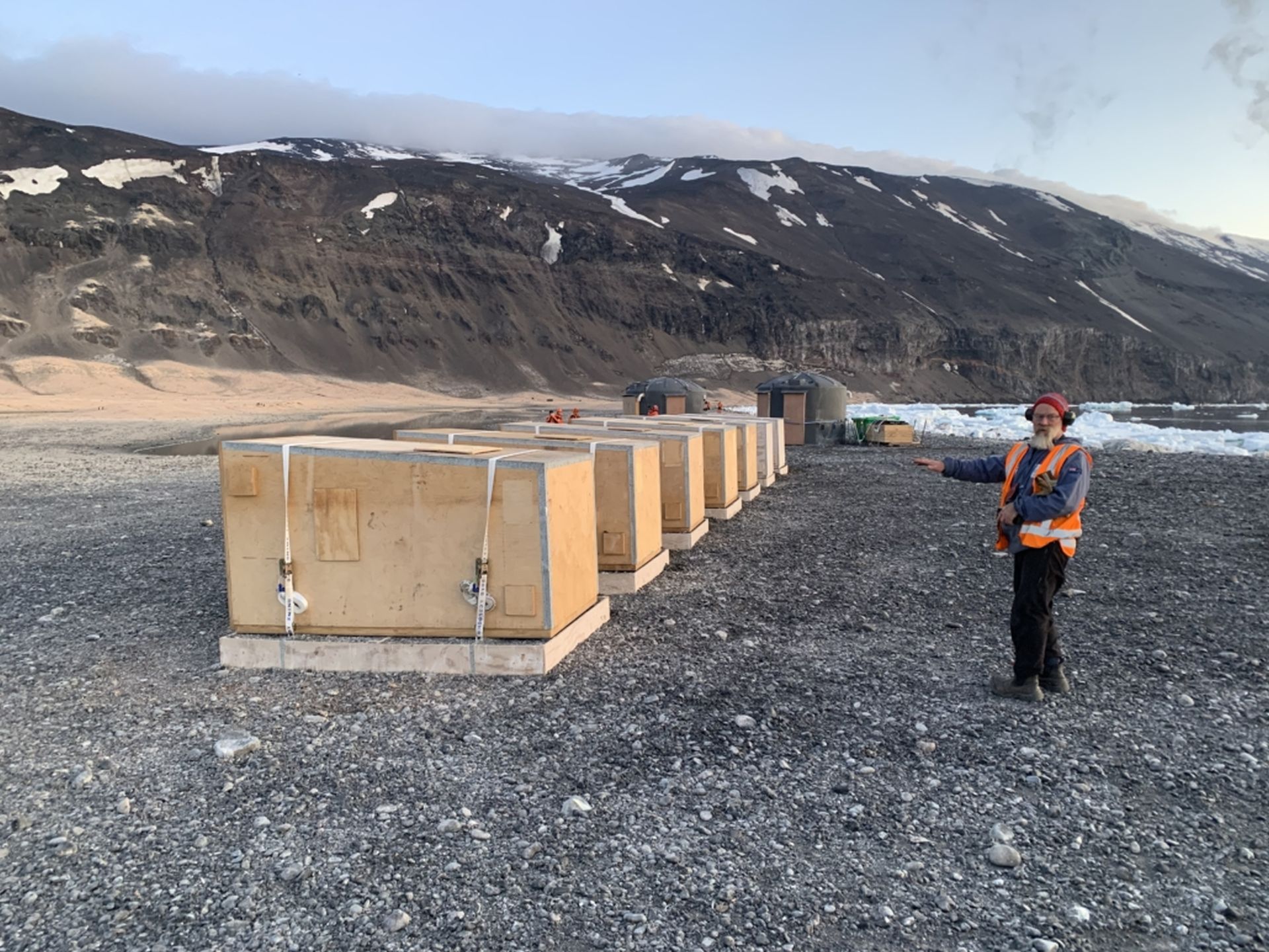 Doug Henderson
Doug Henderson Al Fastier with the polar pods sleeping accommodation
It’s an incredibly remote site to work at and the hostile environment really makes you reflect on how harsh that first season would have been for Borchgrevink’s men, the first team to make their home at this site.”
The success of this project would not have been possible without the support of Antarctica New Zealand and the Polar Research Institute of China. Thank you also to the Italian National Antarctic Programme for hosting the Trust’s team while transiting Terra Nova Bay.
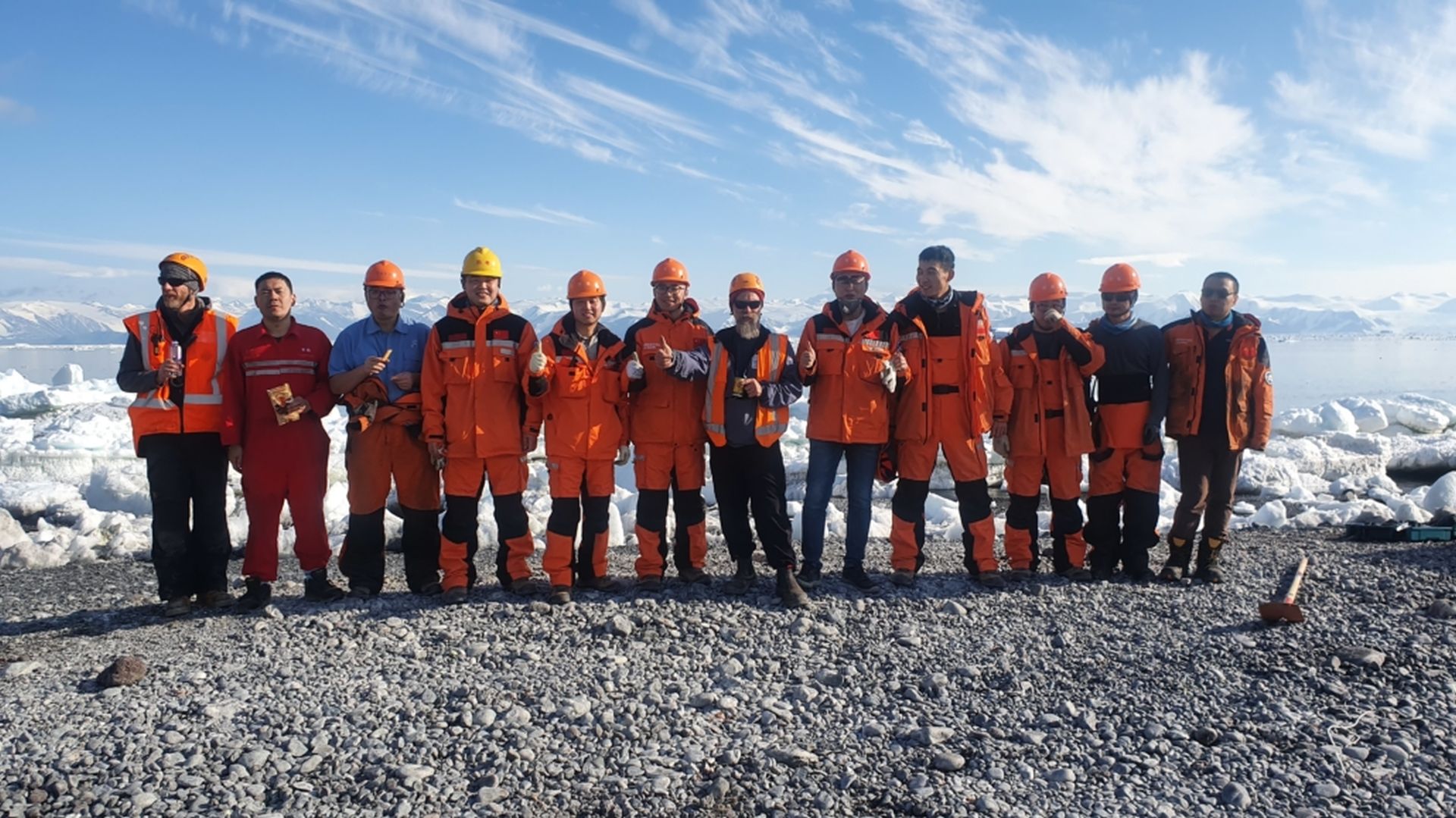 Antarctic Heritage Trust
Antarctic Heritage Trust Members of the Chinese crew from the Xue Long with the Trust’s conservation team.


